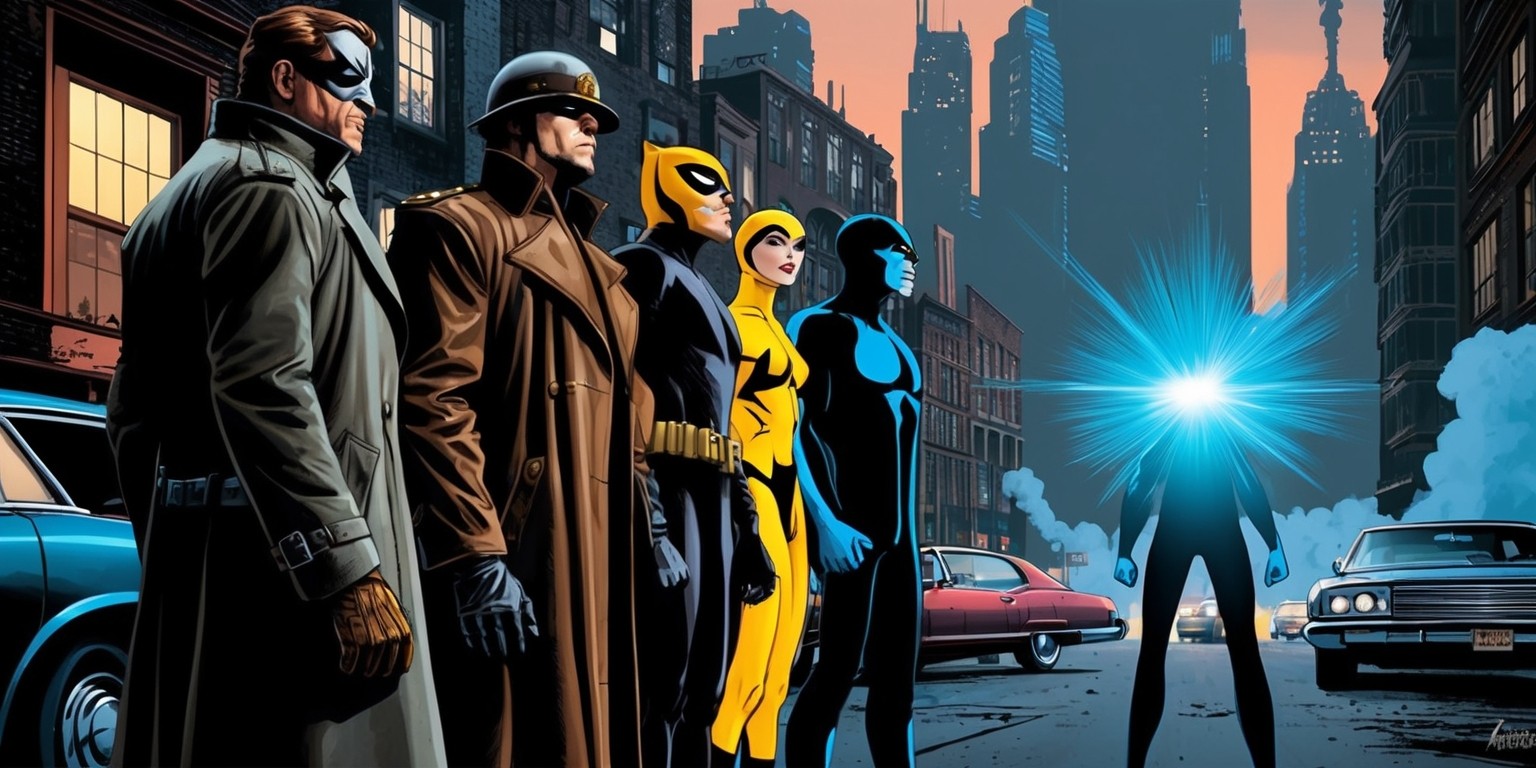
In an era dominated by traditional heroic narratives, Zack Snyder’s adaptation of Watchmen emerged as an audacious declaration in the world of superheroes cinema. Released in 2009, this film challenged established norms and offered audiences an innovative outlook on the true essence of heroism. The journey of Watchmen continues to resonate with fans, encapsulating the complex relationship between individuals and their idols. While many directors shy away from confronting themes that question the very fabric of heroism, Snyder embraced it, leading to a passionate following that remains fervent years later. This article delves into the fascinating insights behind Watchmen, guided by Snyder’s reflections and the movie’s lasting impact on its audience.
Redefining the Superhero Genre
When Watchmen hit theaters, it dared to disrupt the traditional superhero narrative most audiences were accustomed to. In a world where heroes always prevailed, Snyder flipped the script, presenting characters who were as flawed as the people who idolized them. This conscious choice became the crux of the film’s messaging and its subsequent notoriety.
Creating a Controversial Masterpiece
Few movies can assert that they are simultaneously loved and reviled, but Watchmen occupies that distinct space. Before it, superhero movies often portrayed clear-cut definitions of good and evil. Snyder’s vision, however, forced viewers to grapple with moral ambiguities and the real human struggles behind superhero facades.
The Seed of a Cult Following
Snyder rightly points out that Watchmen garnered a ‘rabid’ fanbase, one that fiercely defends the film’s legacy. This relationship stems from a deep and personal connection that fans feel toward the narrative and its characters. By reframing the superhero archetype, Snyder invoked emotions and thoughts that resonated strongly, creating a community of supporters who advocate for the film’s merits.
The Psychology Behind the Fanbase

The fervent dedication of fans can be likened to the way people connect with music. Just as one might feel a singular song belongs to them, the fans of Watchmen perceive the film as a deeply personal experience. Snyder articulates this sentiment, emphasizing how the movie resonates on an almost intimate level with its viewers, leading them to defend it passionately.
Challenging Iconic Narratives
While many superhero stories glorify their characters, Watchmen takes a critical look at them, prompting audiences to reconsider their admiration for flawed individuals. By placing these ‘heroes’ in relatable situations, Snyder encourages viewers to question their sanitized views of heroism.
Exploring Complex Themes
The depth of Watchmen goes well beyond mere entertainment. It intricately weaves themes of morality, identity, and existentialism into its fabric. Snyder's adaptation challenges the audience to think rigorously about their own beliefs concerning societal icons and larger-than-life figures.
Shifting Cultural Perceptions
Prior to Watchmen, the prevailing notion of superheroes often embodied infallibility. Snyder’s film disrupted this notion, positioning heroes as flawed humans. This shift pave the way for an emerging wave of storytelling in which characters embody deeper complexities, paving the way for modern anti-heroes seen in today’s entertainment landscape.
Legacy of Alan Moore and Dave Gibbons
Integral to the brilliance of Watchmen are its original creators, Alan Moore and Dave Gibbons. Their pioneering work in the graphic novel form broke conventional storytelling molds. Snyder acknowledges the revolutionary aspect of their storytelling—a blending of superhero narratives with profound philosophical inquiries.
The Art of Adaptation
Adapting the graphic novel into film was no small feat. Snyder faced the task of preserving the intricate dynamics while making it accessible to a broader audience. This delicate balance between fidelity to the source material and cinematic expression is what makes the film an enduring topic of conversation.
The Unofficial Sequel to Heroism
Ultimately, Watchmen serves as an unofficial sequel to the notion of heroism itself. It posed critical questions, igniting discussions about the morality of power and the obligations of those who hold it. Snyder’s adaptation courageously blazes a trail for future dialogues surrounding hero narratives.
Critical Reception and Financial Success
Despite being a polarizing film with some critics expressing mixed reviews, Watchmen amassed a global box office revenue of $185 million. Its commercial viability speaks to a broader cultural appetite for narratives that challenge conventions. This continued relevance highlights Snyder’s foresight and commitment to storytelling.
A Shift in Perception
In contemporary culture, stories like Watchmen—once considered outliers—have gained acceptance. The mainstream success of movies that embrace anti-hero elements validates Snyder’s vision. His anticipation of this shift has solidified the film's place in cinematic history and paved the way for more profound narratives.
Streaming Success in a New Age
Today, Watchmen remains accessible to audiences on streaming platforms, allowing new generations to experience its depth. As societal attitudes about heroes continue to evolve, the film serves as a masterclass in exploring the dichotomy of human nature and the narratives we construct around power and morality.
The Dialogue Continues
Snyder’s reflections demonstrate that the conversation surrounding Watchmen is far from over. His insights shed light on the film's enduring passion and cultural influence, underscoring the importance of challenging traditional narratives. As viewers revisit the film, they engage in a conversation regarding the fundamental essence of heroism and the shadows inherent in those we idolize.
Conclusion: Embracing the Complexity of Heroes
In retrospect, Zack Snyder’s work on Watchmen can be regarded as a significant turning point in superhero film history. By delving into the complexities of human nature and morality, he constructed a narrative that remains relevant and resonates today. As audiences continue to engage with the film, they find themselves in a crucible of reflection about the ideals they hold and the truths hidden within their favorite characters. The legacy of Watchmen, thus, is one of introspection, challenging viewers to grapple with their beliefs about heroism in a world that is far from being just black and white.
